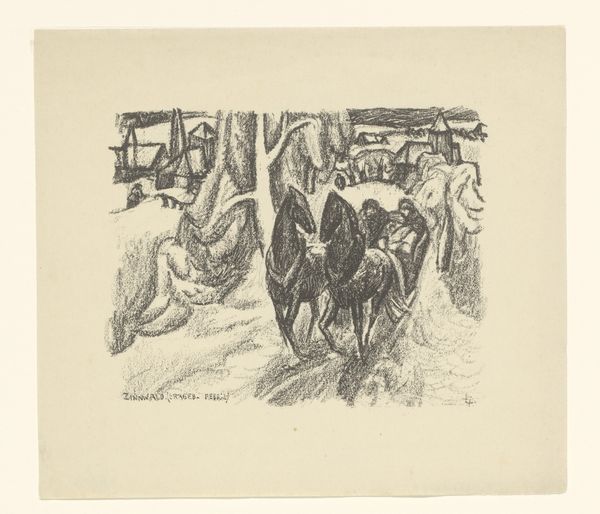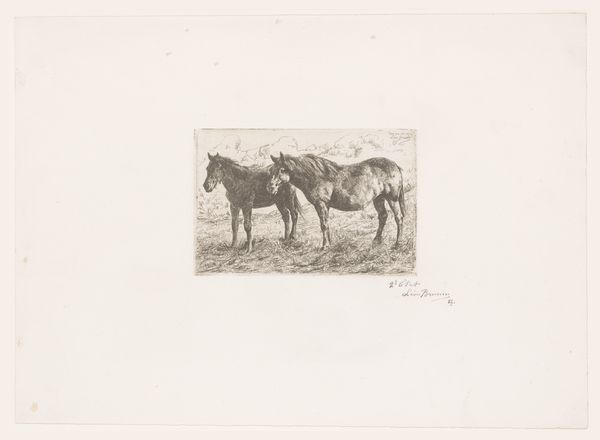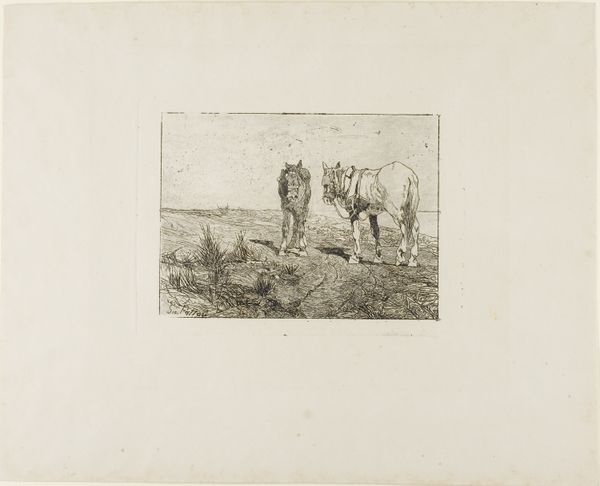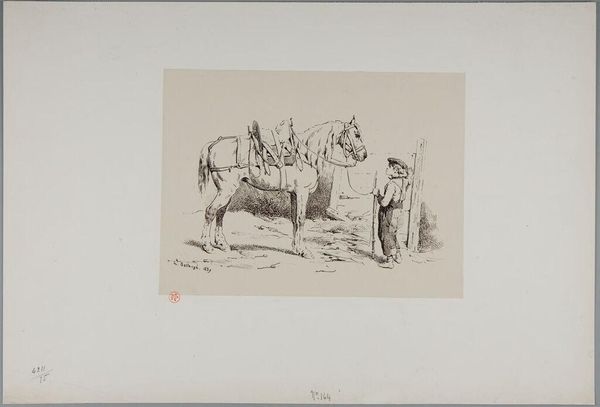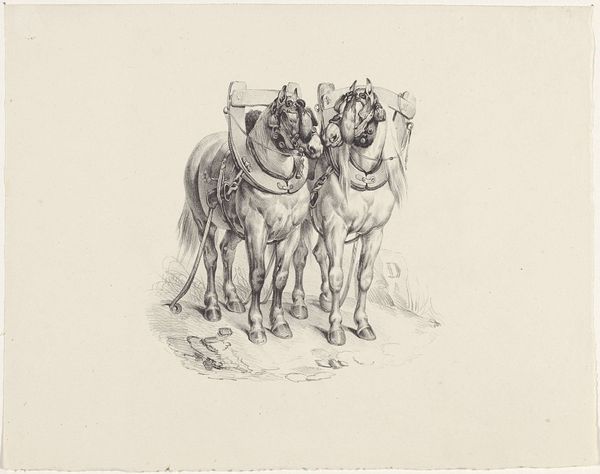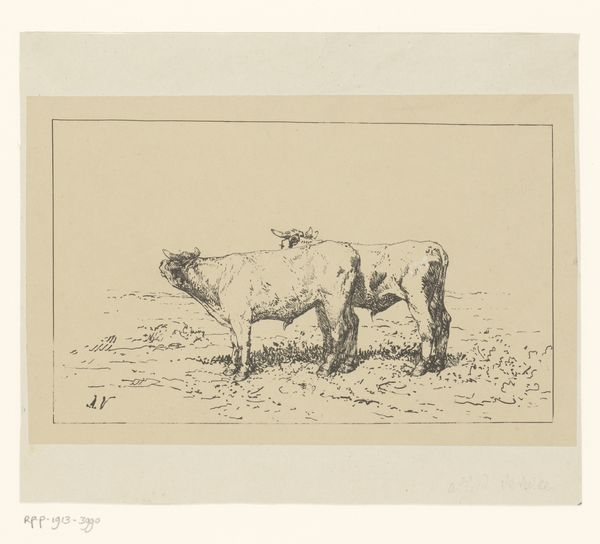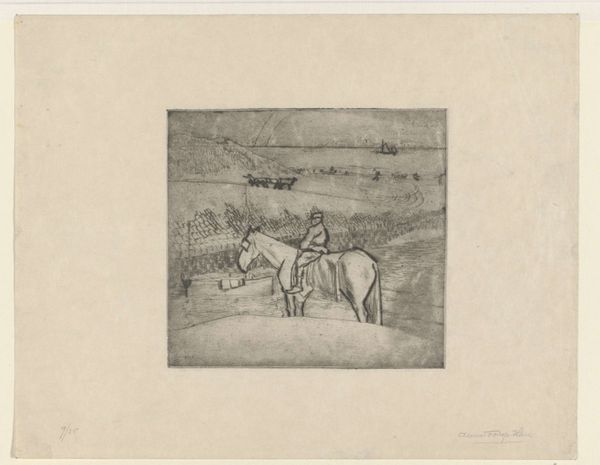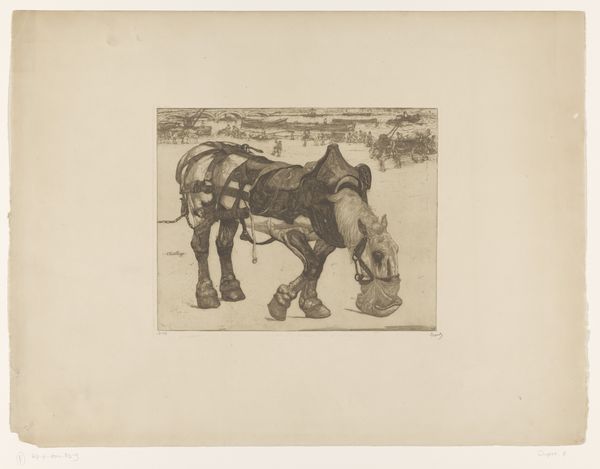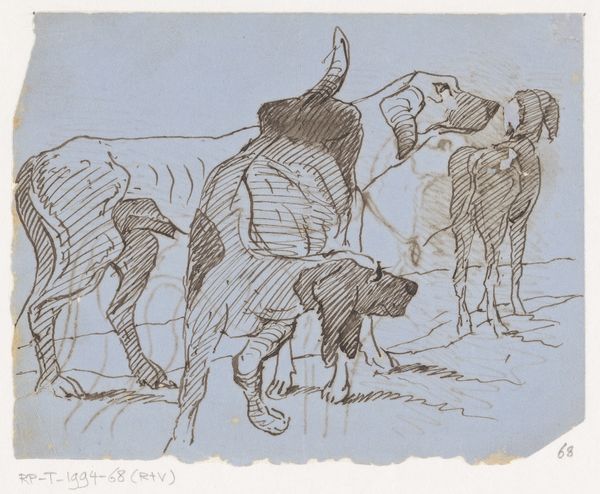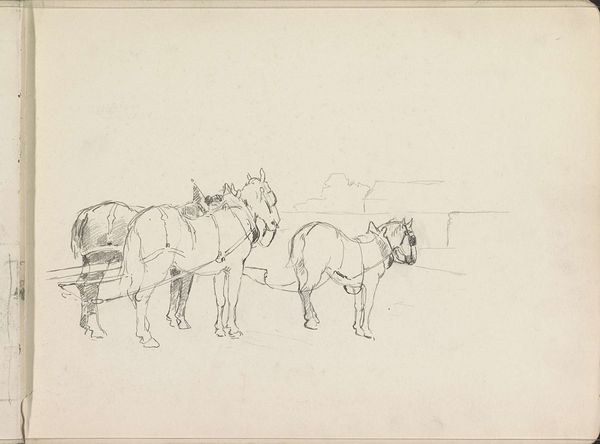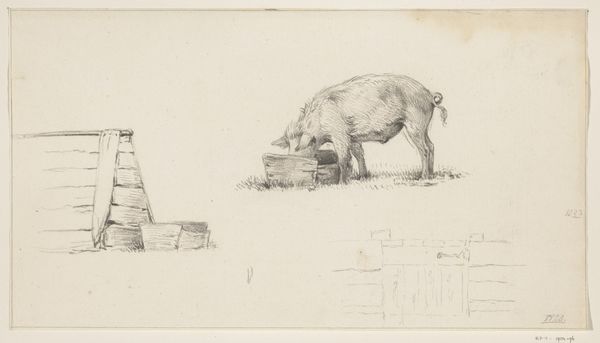
Dimensions: height 315 mm, width 480 mm
Copyright: Rijks Museum: Open Domain
Editor: So, this is "A Calf, Dog and Horse with Wagon" by Gijsbertus Craeyvanger, created sometime between 1820 and 1895. It’s a pencil drawing. It’s quite simple, but I’m curious about why these specific animals together? What do you see in this piece? Curator: Well, it's like a quiet moment plucked from everyday life, isn't it? A vignette of rural existence. You have the calm calf, the drowsy dog, and the horse seemingly caught mid-drink, a horse-drawn wagon nearby suggesting a journey, a purpose. I find it less about specific symbolism, and more about capturing the spirit of a time, a place, a way of being. A realism tinged with, perhaps, romanticism? Does it stir a memory for you, perhaps? Editor: I hadn’t thought of it that way, but it does remind me of my grandparent’s farm! But if it's realism, why these animals and not others? Curator: Ah, that's where it gets interesting! Think about their roles, their place in society at the time. The horse powers transport. The calf embodies livestock, the potential for future prosperity. The dog? A loyal companion. Perhaps it's a snapshot of an ecosystem of interdependence and labor, framed through the lens of human interaction and usefulness. The question remains, do we impose modern day values on past creations? Editor: That's a really helpful point about seeing their value back then. I appreciate the different perspective on Craeyvanger's possible message. Curator: And I, yours! It's by considering art through different eyes, different experiences, that it springs to true life, decades after creation. Perhaps these drawings invite us to pause, observe, and wonder...What small tableau will capture your day?
Comments
No comments
Be the first to comment and join the conversation on the ultimate creative platform.
